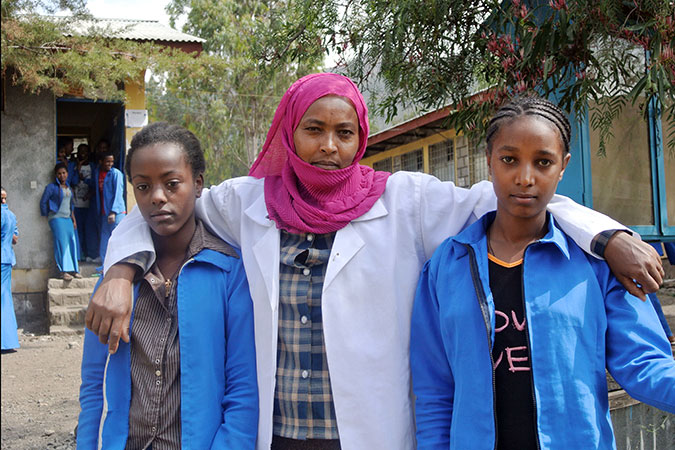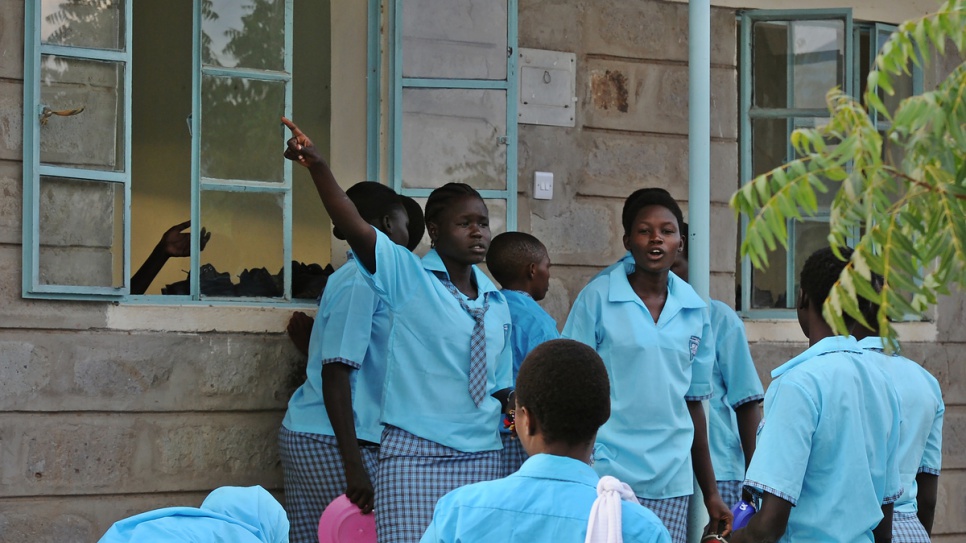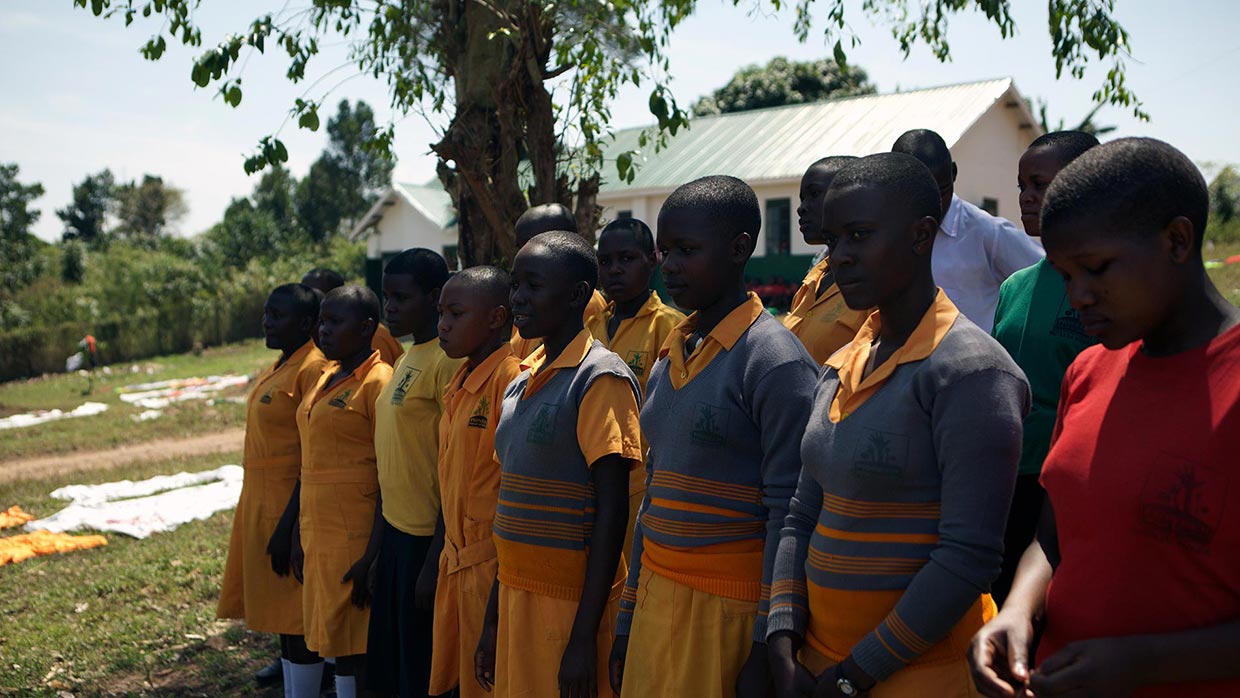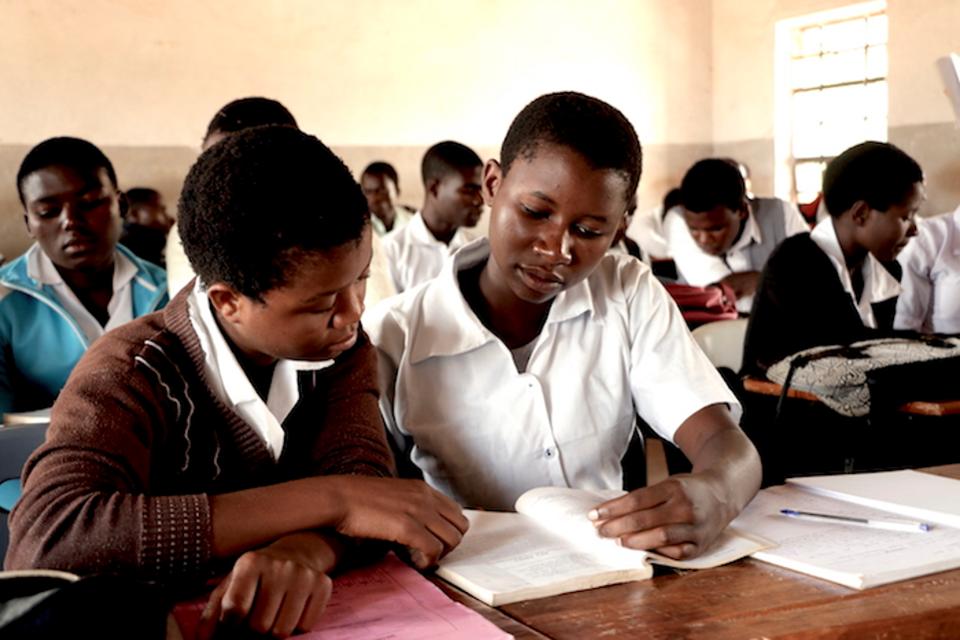Education is so much more than an opportunity to go to school; it is an opportunity to determine one’s future, to establish a voice within and outside of one’s community, and to dream beyond the limits of one’s circumstances.
Education has the capacity to lift people out of poverty and to interrupt intergenerational poverty by equipping children and youth with the skills needed to obtain employment and command higher wages (Haveman and Wolfe, 2001; Huisman and Smits, 2009; Post, 2002).
Education also brings with it countless social benefits, such as an improvement in self-esteem, knowledge about one’s environment, and information on how to make a difference and how to practice a healthy lifestyle.
While education is beneficial for all children, educating girls is particularly important. According to the World Bank 2016, quality education helps girls to find their voice—to “speak and be listened to.” Educating vulnerable girls in marginalized communities and rural areas also leads to a reduction in child marriage, teen pregnancy, at-risk behaviors, female genital cutting, and violence against women and girls. When girls are educated, cycles of gender bias against girls and women are effectively disrupted.
Furthermore, the Global Education Monitoring Report 2016 found that when educated girls become mothers, they are more likely to seek consistent prenatal care for themselves and immunizations and other medical care for their young children, passing the benefits of education on to the next generation. When girls are educated, they are better equipped to lift up themselves, their families, and their communities.
Although the importance of girls’ education is widely acknowledged, access to quality education is still beyond the reach of too many girls. Across Africa, several reasons account for this situation, including forced child labor and marriage. Various explanations have been given for why families choose to marry off their girls or send them to work instead of to school. Scholars suggest that a lower financial return on investing in girls’ education poverty, low school quality, and religious values and patriarchal norms all contribute to this problem.

The question is, how can we ensure that girls receive the education they deserve to help dismantle the structures of poverty and enhance societal well-being? More than that, how can we ensure that girls receive a quality education in a girl-friendly environment, develop their own voice, are consistently engaged, and feel safe from harm? At the grassroots level, this means identifying which practices are transformative in girls’ education; which practices deserve our full exploration and dedication; and how we can move away from responding to the symptoms of a lack of quality education and focus on addressing root causes. As a believer in the game-changing efforts of grassroots initiatives, I will share a few ideas in that direction.
To achieve the United Nations’ Sustainable Development Goal 4—“ensure inclusive and equitable quality education and promote lifelong learning opportunities for all”—holistic, innovative, and gender-sensitive approaches are critical. Grassroots education strategies that are woven into the fabric of communities and facilitate self-sustainable development demonstrate promising results, especially when it comes to reaching the most vulnerable girls and ensuring access to education, retention in school, effective learning, and advancement to the next grade level.
Pax Sakari, the executive director of Rural Initiative for Community Empowerment-West Nile (RICE-WN), a thriving grassroots organization in Arua, Uganda, stated, “Grassroots efforts challenge gender bias and discrimination and focus on establishing creative, girl-friendly environments that prioritize girls’ social and emotional development.”
He added that RICE-WN does this by mobilizing the efforts of all major key stakeholders at the community level, including faith-based organizations, local authorities, occupational groups, children’s/youth clubs, parents, and teacher associations.
In Kenya, Shining Hope for Communities (an urban, slum-based initiative) and Girls Leading Our World (which runs programs in rural areas) confirmed Sakari’s assertion as they shared that as a result of their prioritization of girls’ social and emotional development, over 95% of their students remain in school and transition from upper primary to secondary school.
As important members of civil society, grassroots leaders have a unique opportunity to promote new pedagogy and share lessons that may contribute to the timely achievement of SDG 4. Grassroots initiatives are usually small, home-grown efforts, generally led by local people with a passion for addressing needs in their communities. These efforts are effective because their design and implementation involve potential program participants and mobilize stakeholders to find solutions.
However, though most leaders of grassroots organizations are driven by passion, passion alone is not enough to effect sustainable social change. Responding to issues regarding girls’ education requires in-depth technical understanding. This creates an opportunity for more learning and on-the-ground exposure on the part of grassroots leaders, or for grassroots leaders to build a team of people with sound technical knowledge in the areas in which the organization works.
Furthermore, while most grassroots organizations are led by local community members who have clarity on the needs of the people they serve, it can be challenging to meet these needs and satisfy donor expectations at the same time. In some cases, grassroots initiatives become heavily influenced by donors’ expectations, and the real needs of the community are not fully addressed.
Another challenge facing grassroots organizations is the investment of resources in responding to the symptoms of a problem rather than tackling it from the roots. If the issue is early forced marriage, how will grassroots efforts get to the root of the problem? Is the root cause poverty, ignorance, outdated traditions, or something else?
Local efforts face increasing challenges in attracting funding.

In addition, some local efforts are increasingly facing challenges in attracting funding. This challenge disproportionately affects organizations that are remotely located and those that are more risky to work with due to having little or no internal control systems and limited external networks. Some organizations dream of endowment funds or resource mobilization efforts but struggle to find partners to support those ideas. Others have initiated their own internal resource mobilization mechanisms, but the income accrued is inadequate for fully funding their programs.
In spite of all these challenges, grassroots organizations have made impressive strides in promoting girls’ education. Some of their most effective approaches include:
Raising community awareness. Deepening community awareness on the importance of girls’ education addresses community members’ misconceptions and misinformation about girls’ education and helps remove some of the gender bias. Because community awareness efforts change attitudes, this approach is able to have a real effect on some of the root causes that keep girls from completing their education.
Grassroots organizations that incorporate awareness raising into their programs often work with young people and families through community forums, home and school visits, and door-to-door campaigns to help them better appreciate the value of girls’ education. Some of the most effective methods in addressing social and cultural barriers to girls’ education involve boys and men, families, community leaders, faith-based organizations, and the local private sector to ensure that girls are given equal opportunities.
Lowering school costs. Reducing the financial cost of schooling removes a critical barrier that girls face to accessing education.
Providing life skills training and academic support. Encouraging girls’ leadership skills and their creative, social, and emotional development has been working well in promoting girls’ education. The executive director of Action for Children Tanzania pointed out that the use of tailored life skills, leadership, and mentorship programs to facilitate quality learning has been very effective in ensuring retention in school and promoting learning. He added that his organization integrates role modeling and sexual and reproductive health awareness strategies to provide holistic education. He also underscored the relevance of peer academic support or a peer-tutor approach where a platform is provided for girls in more-advanced classes to academically support those in less-advanced classes.
Continually improved academic performance is important in ensuring quality girls’ education. Grassroots organizations use after-school learning programs or holiday academies to provide support for and to help accelerate girls’ academic performance. Many programs provide other types of extra tutoring or remedial classes outside of school to girls who need extra assistance.
Offering teacher support. Grassroots organizations play an important role in providing support for teachers, helping to ensure quality teaching. In some areas, public recognition of teachers is used as a motivating tool. Other grassroots organizations strengthen parent-teacher associations and school management committees, as a way to maintain internal controls that serve the best interests of girls. Most organizations also use local materials to help teachers develop relevant—and therefore often more effective—learning and teaching aids. In addition, they support teacher training and refresher programs to help teachers stay up to date on improved teaching methods.
Engaging in advocacy. Community-based advocacy by grassroots organizations is an important way to promote quality education for girls. Effective collaboration with the local government to develop and strengthen the school curriculum has been key in improving quality learning. In addition, in countries such as Kenya, Nigeria, Tanzania, and Uganda, grassroots organizations have mobilized themselves into networks that are transitioning into movements capable of mounting pressure on local governments to promote and support quality girls’ education at all levels.
Increasing school retention. Grassroots organizations generally go beyond supporting access to quality education for girls; they also focus on girls’ retention and advancement in school. Most of the school retention initiatives work by providing a supportive educational environment to keep girls in school, while working to remove some of the barriers that keep girls away from school.
A major barrier to girls’ retention is the distance to school.
For instance, nutrition and wellness services often form part of a supportive environment for girls. Some organizations have established school feeding programs that have contributed significantly to increased retention. Other organizations pair supplemental feeding with reproductive/healthcare support to help girls stay in school. In Ghana, the Centre for Development Initiatives works with community health workers to provide supplemental feeding along with health insurance registration and renewal through the National Health Insurance Scheme.
For organizations like CEE-HOPE, which works in Nigeria’s slums, girls’ clubs and female mentors have been effective tools for keeping girls engaged in their education. In some places, school clubs are formed to help fight gender-based violence and promote the protection and safety of girls, both at school and outside of school. The use of female mentors and teachers has proved to be particularly effective in supporting girls to overcome negative peer pressure and stay in school. Regular monitoring of attendance, consistent meetings with parents, vocational skills training, and workshops have also contributed to improving girls’ school retention.
A major barrier to girls’ retention is the distance to school. Many schools are located long distances from students’ homes, and the route to and from school can pose a threat to girls’ safety. Even when the route is safe, a long daily walk can negatively affect school retention. Some grassroots organizations have responded to this by providing boarding or hostel facilities and/or bicycles to ease travel to and from school.

The executive director of Foundation for Inclusive Community Help, a rural grassroots organization in Uganda, has indicated that two of the strongest barriers to girls’ school retention are societal expectations and traditions. In many cultures, adolescent girls are seen more as women than as girls, and they are therefore subject to the societal norms and expectations that come with being a woman. These expectations and the related pressure from parents and peers contribute to the girls losing interest in school and leaving school prematurely, often to marry or fulfill traditional roles. To shift these expectations, grassroots initiatives work with boys and men to teach them about the importance of girls’ education and to help them understand their role in supporting girls not just to go to school but to stay in school and learn.
In some cases, teachers and school staff inadvertently reinforce damaging traditions and girl-unfriendly societal norms instead of challenging them. This is done by unconsciously giving boys preferential treatment in class or in the school, assigning school chores to girls, and expressing gender-biased expectations for what girls and boys will do when they grow up. Grassroots organizations’ sensitization efforts help to address this issue. Nyanza Initiative for Girls’ Education and Empowerment, a grassroots organization in Kenya, has been particularly effective with its outreach programs in this regard.
Other effective grassroots initiatives to achieve quality education for girls are gender-sensitive teacher training and interventions, integrated technology, incentivizing learning through civic responsibility, field trips, and independent learning activities.
Grassroots organizations have what it takes to remove the emotional, psychosocial, financial, and sociocultural barriers that keep girls from getting an education, and grassroots strategies allow for innovative, quality education for girls that is inclusive, holistic, and adaptable.

